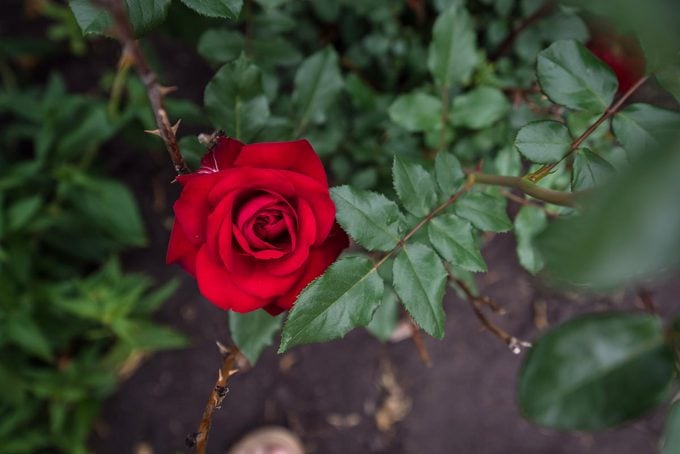Roses Not Blooming? Here’s What to Do
Updated: Aug. 31, 2023

Rose bushes require specialized care. Find out why your roses are not blooming and why rose flowers sometimes change color.
Climbing Rose Not Blooming
“Last year I planted a new hybrid tea climber. It grew vigorously but produced not one sign of a bud or flower. Can you tell me how it’s possible to have a healthy climber without blooms?” asks Beulah Maurer of Greenville, Ohio.
Horticultural expert Melinda Myers: Like many hybrid tea and floribunda roses, hybrid tea climbers are grafted onto a hardy rootstock. If the graft union dies, the rootstock will take over and produce lush, often thornier growth with different flowers, or none at all. If this is not the problem, evaluate your pruning practices.
Most climbers bloom on old wood, so pruning needs to be limited and timed appropriately. Older or winter-killed stems should be removed in late winter or early spring, before growth begins. Do additional light pruning after the first flush of flowers fades.
How to grow roses: what you need to know.
Rose Bush Without Flowers
“Last spring my rose bushes were covered in sprouting leaves that didn’t produce flowers. Is it too late to prune when roses are not blooming?” asks Denise Martin of Justice, Illinois.
Melinda: Repeat-blooming roses are best pruned after the worst of winter weather has passed and before growth begins. Roses that only bloom once a year are typically pruned after the flowers fade. At this point, you may want to wait until the leaves are fully expanded to reduce the risk of damaging the canes during the pruning process.
Last year’s lack of blooming on your roses may indicate a problem unrelated to pruning, though. Many roses are grafted by placing a bud from the desirable rose onto a set of hardy roots. If this graft union (where the bud connects to the roots) fails from winter cold or another cause, the roots take over producing all the new growth.
The stems that sprout from the roots are often stouter and have more thorns. They may be covered with just leaves, or they may produce flowers that are different than those of the original plant.
Learn how to prepare and prune roses for winter.
Roses That Change Color

“I salvaged the roots of a pink rambling rosebush that had been mowed down and neglected. I gave it lots of TLC for three years before planting it in the ground. Finally, three years later, it came back to life, flourished and the rose is now blooming red. Why is that?” asks Mary Wallace of Kell, Illinois.
Melinda: It sounds as if the graft died or was mowed off and the hardy rootstock took over. The desirable bud of hybrid tea and grandiflora roses were—and many still are—grafted onto a hardier rootstock. If cold weather, mowing or animals damage the graft, the desirable top of the plant dies and the rootstock takes over. I’m afraid your pink rose is gone. You can embrace the red rose or replace this plant with one you prefer.
Psst—roses love garlic: find out why.
“The yellow rosebush in my garden is producing velvety red flowers. How did this happen?” asks Carol Grajzar of Silver Creek, Georgia.
Melinda: Roses are often grafted onto the roots of a different variety to speed development and increase hardiness. If the graft dies, the desirable rose disappears and the hardier rootstock takes over producing its own flowers.
Backyard tip: If a rose graft dies, leaf color and shape or even flower color may change.
Learn how to treat black spot and rose rosette disease.




















